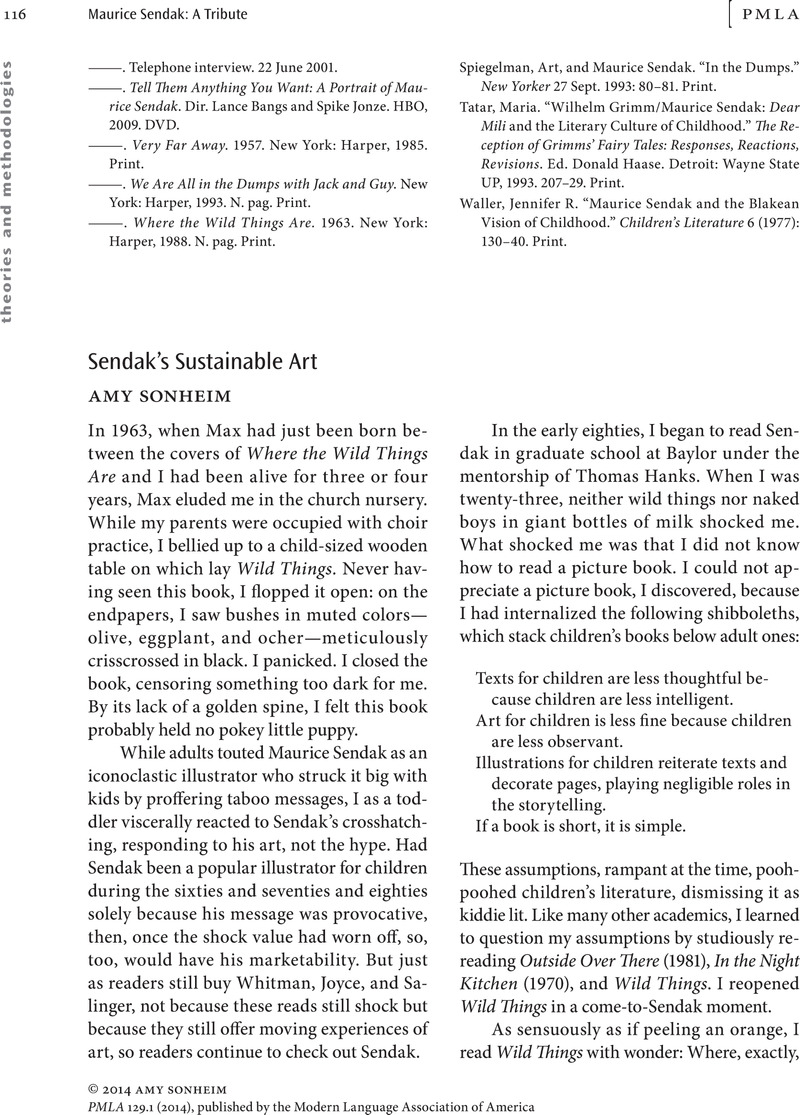No CrossRef data available.
Article contents
Sendak's Sustainable Art
Published online by Cambridge University Press: 23 October 2020
Abstract
An abstract is not available for this content so a preview has been provided. Please use the Get access link above for information on how to access this content.

- Type
- Theories and Methodologies
- Information
- Copyright
- Copyright © Modern Language Association of America, 2014
References
Works Cited
Cohen, Patricia. “Concerns beyond Just Where the Wild Things Are.” The New York Times. New York Times, 10 Sept. 2008. Web. 22 May 2013.Google Scholar
Cott, Jonathan. “Maurice Sendak, King of All Wild Things.” Rolling Stone 30 Dec. 1976: 48–59. Print.Google Scholar
Drinan, Helen G. “Welcome.” Children's Literature Association: Thirty-Ninth Annual Conference: “Literary Slipstreams.” Boston: Simmons Coll., 2012. iv. Print.Google Scholar
Howard, Jennifer. “From ‘Once upon a Time’ to ‘Happily Ever After.‘” Chronicle Review 22 May 2009: B6-B8. Print.Google Scholar
Knoepflmacher, U. C. Introduction. Teaching Children's Literature: Issues, Pedagogy, Resources. Ed. Sadler, Glenn Edward. New York: MLA, 1992. 1–9. Print. Options for Teaching 11.Google Scholar
Shafer, Jack. “Maurice Sendak's Thin Skin.” Slate 15 Oct. 2009: n. pag. Web. 22 May 2013.Google Scholar
Zipes, Jack, Paul, Lissa, Vallone, Lynne, Hunt, Peter, and Avery, Gillian, eds. The Norton Anthology of Children's Literature: The Traditions in English. New York: Norton, 2005. Print.Google Scholar


